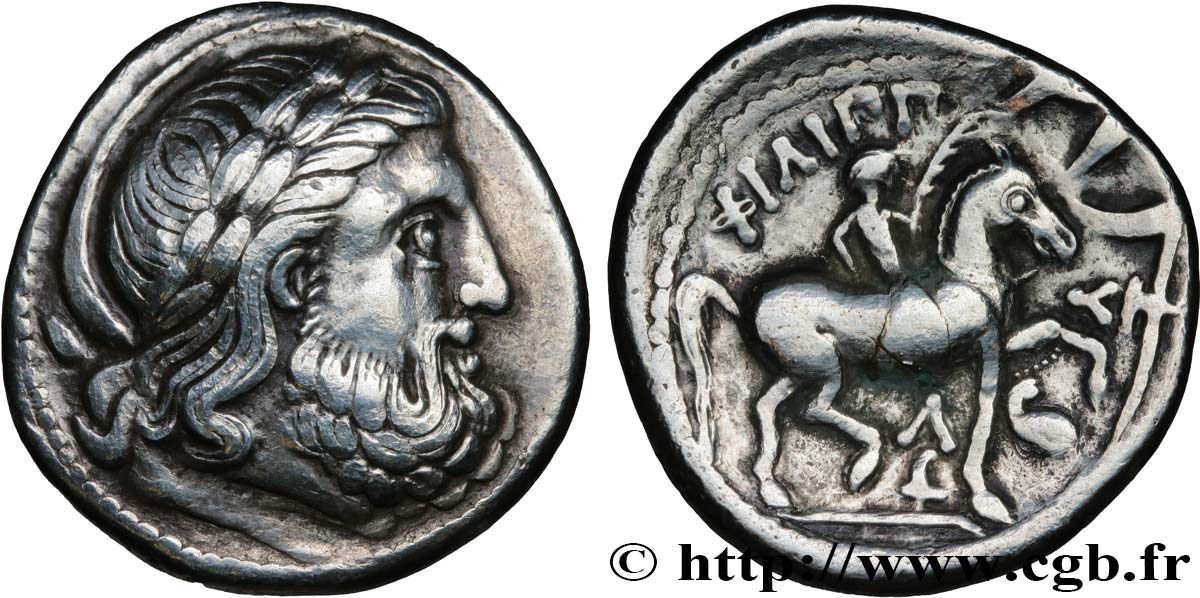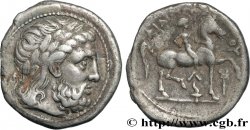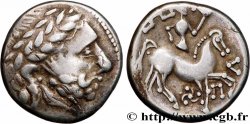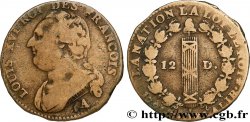Live auction - bgr_498621 - DANUBIAN CELTS - TETRADRACHMS IMITATIONS OF PHILIP II AND HIS SUCCESSORS Tétradrachme au cavalier, imitation de Philippe II
Чтобы принять участие в торгах, вы должны войти в систему и стать подтвержденным участником аукциона. Войдите, чтобы сделать ставку. Ваш аккаунт будет подтвержден в течение 48 часов. Не ждите до закрытия торгов, чтобы зарегистрироваться.Сделав ставку на данный товар, вы вступаете в юридическое соглашение на покупку выбранного товара и нажатием кнопки «Сделать ставку» подтверждаете принятие вами условий интернет-аукционов cgb.fr.
Ставка может бить сделана только в полном эквиваленте евро. Торги закроются согласно времени, указанному в описании товара, все ставки, сделанные после закрытия торгов, учитываться не будут. Не следует откладывать предложение вашей ставки до последнего момента, так как система может не успеть обработать вашу заявку, и ваша ставка не будет принята. Более детальную информацию вы найдёте здесь: FAQ по интернет-аукционам.
Все ставки победителей подлежат комиссии 18%.
Все ставки победителей подлежат комиссии 18%.
| Оценить : | 750 € |
| Цена : | 450 € |
| Максимальная предлагаемая цена : | 450 € |
| Конец торгов : | 11 September 2018 14:05:51 |
| Участников : | 1 Участников |
Тип Tétradrachme au cavalier, imitation de Philippe II
Дата: (IIe-Ier siècles avant J.-C.)
Металл: silver
Диаметр: 26,5 mm
Ориентация осей монеты: 12 h.
Вес: 13,08 g.
Редкость: R2
Комментарии о состоянии
Exemplaire sur un flan large bien centré des deux côtés. Belle tête particulière, légèrement stylisée de Zeus. Frappe un peu molle et brouillée au revers. Patine superficielle. A été nettoyé anciennement
Ссылки в каталоге: :
Лицевая сторона
Аверс: легенда: ANÉPIGRAPHE.
Аверс: описание: Tête laurée de Zeus à droite ; grènetis.
Обратная сторона
Реверс: Описание: Cavalier au pas à droite, tenant une palme de la main droite ; le cheval lève l'antérieur à droite, encadrée d’une lettre, d’une torche de course et d’un dauphin ; au-dessus du cavalier, la légende.
Реверс: легенда: FILIPP-.-U/ L
Реверс: перевод: (de Philippe).
Комментарий
Imitation de l’atelier d’Amphipolis avec le lambda et la torche de course sous le cheval au revers. Poids léger. Si le statère d'or de Philippe II de Macédoine a servi de prototype à de nombreuses imitations gauloises, le tétradrachme n'a pas été imité en Gaule, mais reste principal sujet d'inspiration des monnaies pour les Celtes du Danube (LT. 9697-9767, 9768-9832, 9618-9630, 9870-9886). Les premières imitations furent frappées dans le premier quart du IIIe siècle avant J.-C. La fabrication des copies serviles, puis des imitations, enfin des frappes celtiques continuèrent pendant plus de deux siècles.
Le revers est particulièrement intéressant, avec des motifs assez inhabituels ; le dauphin devant le cheval est particulièrement bien visible, alors qu'il est difficile de déterminer la nature du motif partant de la ligne d'exergue.
Cet exemplaire correspond au n° 961 ou 973 (même photo) du musée de Vienne.
Imitation from the Amphipolis mint with the lambda and the racing torch under the horse on the reverse. Light weight. While the gold stater of Philip II of Macedon served as a prototype for many Gallic imitations, the tetradrachm was not imitated in Gaul, but remains the main source of inspiration for coins for the Danube Celts (LT. 9697-9767, 9768-9832, 9618-9630, 9870-9886). The first imitations were struck in the first quarter of the 3rd century BC. The manufacture of servile copies, then imitations, and finally Celtic strikes continued for more than two centuries. The reverse is particularly interesting, with rather unusual motifs; the dolphin in front of the horse is particularly visible, while it is difficult to determine the nature of the motif starting from the exergue line. This example corresponds to no. 961 or 973 (same photo) from the Vienna museum
Le revers est particulièrement intéressant, avec des motifs assez inhabituels ; le dauphin devant le cheval est particulièrement bien visible, alors qu'il est difficile de déterminer la nature du motif partant de la ligne d'exergue.
Cet exemplaire correspond au n° 961 ou 973 (même photo) du musée de Vienne.
Imitation from the Amphipolis mint with the lambda and the racing torch under the horse on the reverse. Light weight. While the gold stater of Philip II of Macedon served as a prototype for many Gallic imitations, the tetradrachm was not imitated in Gaul, but remains the main source of inspiration for coins for the Danube Celts (LT. 9697-9767, 9768-9832, 9618-9630, 9870-9886). The first imitations were struck in the first quarter of the 3rd century BC. The manufacture of servile copies, then imitations, and finally Celtic strikes continued for more than two centuries. The reverse is particularly interesting, with rather unusual motifs; the dolphin in front of the horse is particularly visible, while it is difficult to determine the nature of the motif starting from the exergue line. This example corresponds to no. 961 or 973 (same photo) from the Vienna museum








 Cообщить об ошибке
Cообщить об ошибке Распечатать страницу
Распечатать страницу Отправить мой выбор
Отправить мой выбор Задать вопрос
Задать вопрос Consign / sell
Consign / sell
 Информация
Информация











